Clay masks are great at absorbing oil, cleansing, and soothing irritated skin. Men and women alike use clay masks as a regular part of their skincare routine, which may cause you to ask what ingredients are in these masks and how they actually affect the skin's surface. We have researched the most popularly used ingredients for you and can provide you with some answers on this topic.
It's no surprise that the most prevalent ingredient in clay masks is clay. The following clays are the most commonly used in commercially produced and homemade clay masks:
- Kaolin
- Fuller's Earth
- Red Rhassoul
- Bentonite
- French Green
These clays are often combined with rose water, honey, or facial oils such as jojoba to create an oil-absorbing mask.
Each of these clays has slightly different functions and is recommended for a specific skin type. Continue reading to learn more about which types will work best on your skin type and how to make a homemade clay mask quickly, easily, and affordably.

This article may include affiliate links and elements that were carefully created by our team using advanced ai to help you envision the best style advice.
Most Common Clay Mask Ingredients
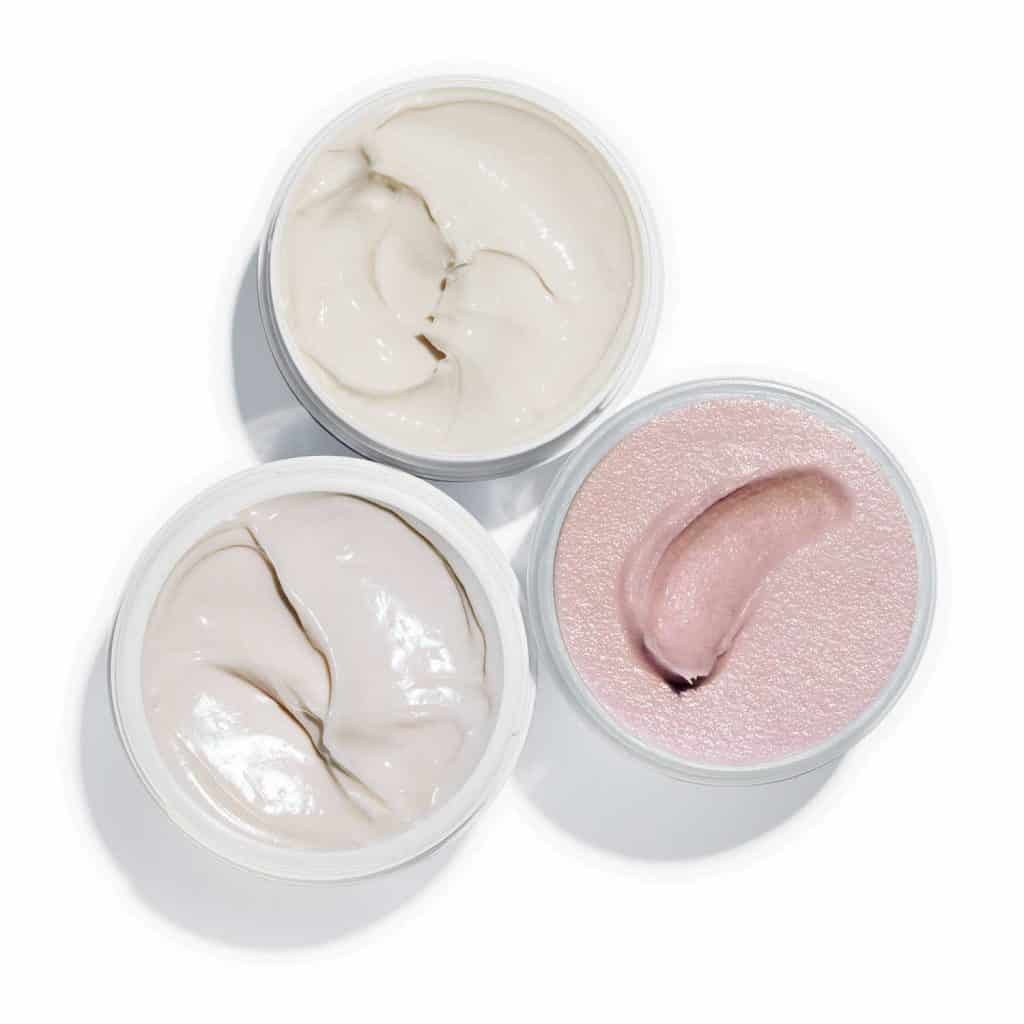
Clay masks can be bought or made and come with a wide variety of ingredients, though the most common and most prevalent ingredient in any clay mask is the actual clay. This post will familiarize you with some of the most common types of clay used in facial masks.
Kaolin
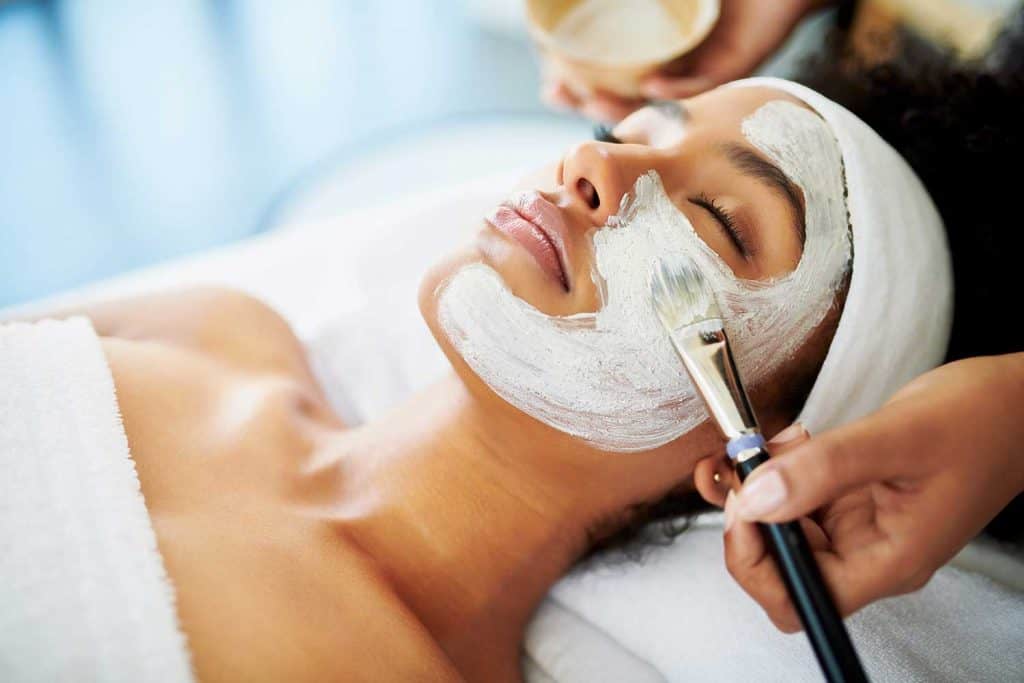
Kaolin is generally white but comes in yellow and pink varieties as well. It comes from China, where it's been in use for many years. This clay is commonly found in commercially available clay face masks, but can also be used in conjunction with any moisturizing facial oil, such as jojoba, to make a quick and simple clay mask or face rub at home.
In a mask, this clay is used for moderate oil absorption and to help smooth the skin's surface. It is more gentle and soothing but can be drying. However, it is less drying than some of the other clay mask options, so it can be a good fit for folks with drier skin. White kaolin is suggested for sensitive skin while pink kaolin is better suited for oily, acne-prone skin.
Fuller's Earth
Fuller's Earth clay is a popular choice amongst people wanting to use a homemade mask on their skin. This ingredient is affordable and readily available for purchase. It is another clay that is less drying than some and can be used on more sensitive or dry skin. Some people like to use it in combination with lavender essential oils for a more soothing and calming effect.
Click here to see this product on Amazon.
This clay is the color of peanut butter and can absorb large amounts of oil and other impurities. It is commonly used to improve skin's tone and complexion and is said to have some skin-lightening properties, making it a great pick for aging skin or anyone looking to reduce the appearance of dark spots or scars on the skin's surface.
Red Rhassoul
A brown or reddish clay produced in Morocco, red Rhassoul is another popular clay face mask ingredient. This clay is magnesium-rich, a vital nutrient for skin health, and is commonly used on oily and acne-prone skin because it does a wonderful job of absorbing sebum and other impurities.
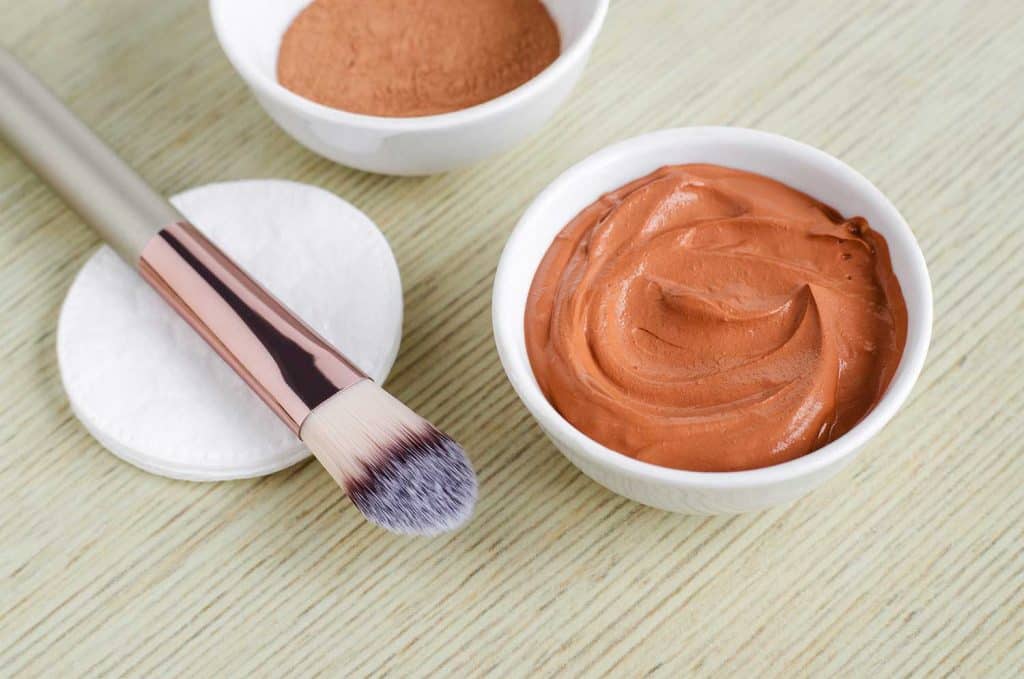
This clay is not recommended for those with sensitive or very dry skin, as it can cause irritation in people with these particular skin types. The use of Rhassoul clay in a face mask is a great way to detox angry, hormonal skin.
Bentonite
Probably the most commonly used ingredient in commercially manufactured clay face mask products, Bentonite is white in color and multi-functional. This clay derived from volcanic ash is great at absorbing oil and dirt. It can even significantly improve the appearance of blackheads by absorbing impurities, toxins, and other pollutants built up on the skin.
Click here to view this Pure Biology Bentonite clay mask on Amazon.
Though nothing can actually shrink pores, Bentonite can cleanse and tighten the skin giving the appearance of smaller, more refined pores. It is great at smoothing textured skin and is a popular choice among face mask manufacturers for this reason. This clay is found and mined in countries all around the world, so it is very affordable and widely available.
French Green
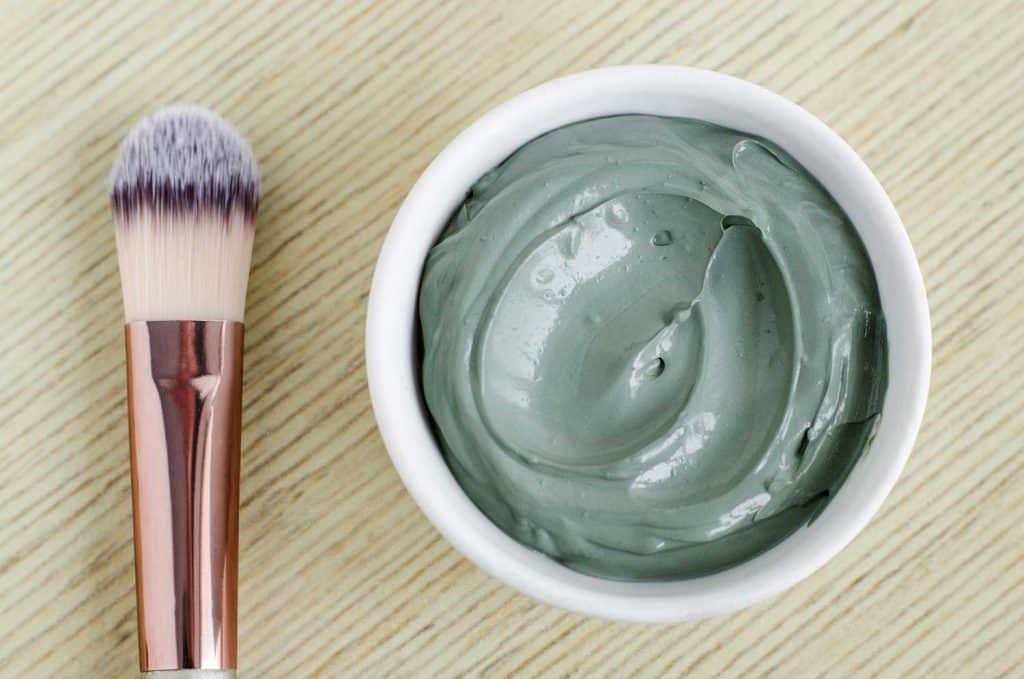
If you have irritated skin, acne or rosacea, and redness, French Green clay is the mask ingredient for you. Originating in France, it is now mined in several other countries. It is the gentlest on the skin of all the commonly used types of clays and is great for reducing inflammation and redness.
This clay is not only amazing on sensitive skin types but also has all the benefits of the other clays while being more gentle and less drying. It cleanses away impurities, absorbs excess sebum, and calms irritated skin while doing so. This clay can result in minimized pore appearance and a smoother overall skin texture.
What Does a Clay Face Mask Do?
Clay masks help absorb oil and impurities from the skin's surface. They are a great way to cleanse congested pores and help your skin reset. Some clay masks can be overdrying while others mix relatively well with sensitive skin, so make sure you are using a mask containing only ingredients that will work best with your skin type.
How Often Should You Use A Clay Mask?
As all clay masks absorb your skin's natural oils, it is not recommended to use a clay mask as part of your daily skincare routine. Clay masks should be used as needed to complement your regular daily skin care regimen. Only use a clay face mask a maximum of two times a week, as using a clay mask too frequently may result in dry, irritated skin.
Should You Wash Your Face After A Clay Mask?
You should always wash your face after using a clay mask. Most clay masks require you to wash them off with water to remove them, though some peelable face masks may contain clay ingredients. Use a gentle cleanser or plain water to carefully remove the mask from your face. Do not use water that is too hot or harsh acne or foaming cleansers, as your skin will already be drier and free of oils after removing the clay.
Do You Put Moisturizer On After A Face Mask?
Most people prefer to follow up a clay facial mask with the use of a cream moisturizer or a moisturizing mask. Clay will absorb all the oil from your skin's surface and can leave your skin feeling tight, dry, and uncomfortable.
This moisturizing cream is not too heavy on the face and is great for sensitive skin.
Click here to see this Vanicream all-purpose moisturizer cream on Amazon.
Moisturizer is used to return some moisture to your skin and is recommended following the use of a clay mask. If you struggle with oily skin and are concerned about over-moisturizing, check out our post on what to do if moisturizer makes your face feel too oily by clicking here.
How Do You Make a Homemade Clay Mask?
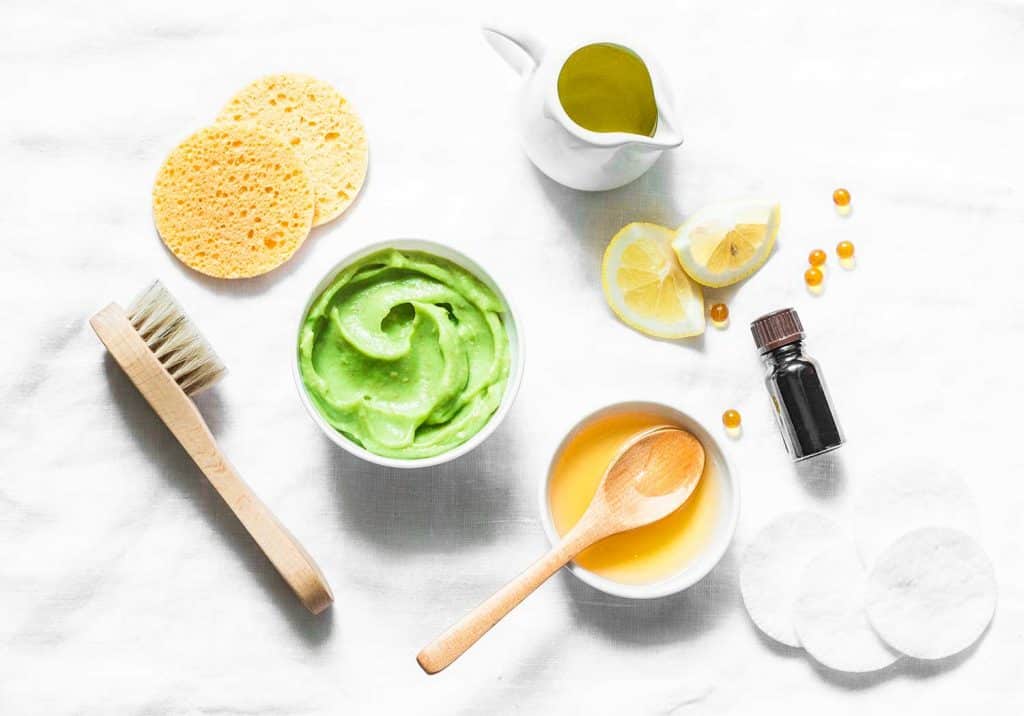
It is easy to make a homemade clay facial mask. Use whichever clay powder is best suited for your skin type and a liquid to create a basic clay mask. Water, creams and oils, and even foods are sometimes used as the liquid ingredient. Some good liquids to consider mixing with your clay powder are:
- filtered water
- facial moisturizer
- jojoba oil
- honey
- rose water
You will need to mix your clay powder with enough liquid to make it the consistency of paste or glue. It should not drip or run, but be saturated enough to be able to be easily spread onto the skin's surface. You may want to use filtered water in conjunction with other liquid ingredients, as you do not want to use a large amount of heavy or expensive oils when creating your custom face mask.
Click here to check Cosmic Element's french green mixable clay powder on Amazon.
Other ingredients people have included in their homemade clay face masks include:
- charcoal powder
- avocado
- green tea
- turmeric
- lavender
After mixing all ingredients, apply and leave your homemade mask on for around five to ten minutes until it is fully dry, tight and cracking, or flaking. Remove with water or a gentle face cleanser and follow up with a moisturizer if desired.
Clay Masks Are Great at Absorbing Oil And Impurities
Clay masks work wonders on anyone needing a good detox of the skin's surface. They lift oils and impurities away and leave behind a smooth surface primed and ready for moisturizer. If you enjoyed this post on clay face mask ingredients, you may also be in need of a good daily skin care regimen. Click here to read up on how much facial cleanser to use as part of your daily skincare routine.

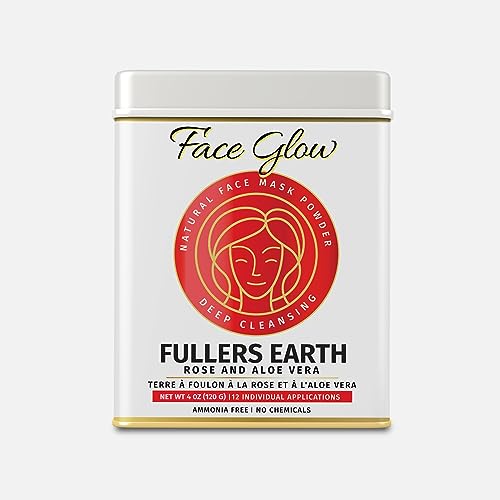



![Scientist holding Cyanoacrylate glue, Is There An Eyelash Glue Without Cyanoacrylate? [A Guide to Finding Safe Alternatives] - 1600x900](https://stylecheer.com/wp-content/uploads/2023/09/shutterstock_2238414685-300x169.jpg)
![Applying lash glue onto fake eyelashes, Why Is My Lash Glue Not Sticking? [Common Reasons and Solutions] - 1600x900](https://stylecheer.com/wp-content/uploads/2023/09/shutterstock_1059533828-300x169.jpg)
![Pouring black lash glue onto a small mat, What Glue Do Lash Techs Use? [A Guide to Lash Extension Adhesives] - 1600x900](https://stylecheer.com/wp-content/uploads/2023/09/shutterstock_1541038103-300x169.jpg)